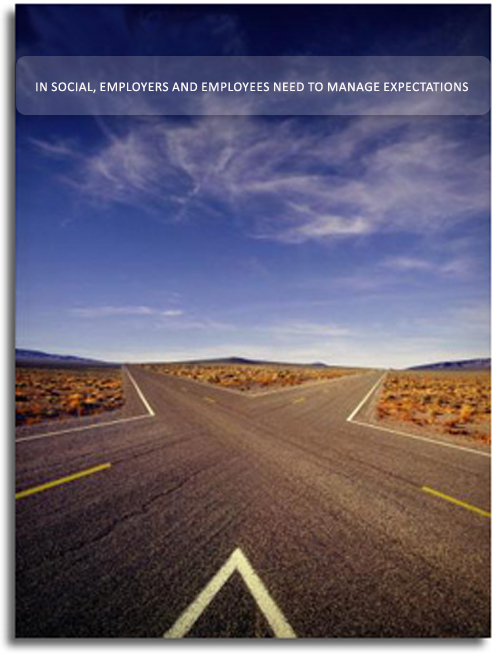
If you talk at any length to any large corporations these days, they are all excited about the possibilities that social media might bring to their organizations, except that they are scared to death of the risks that social presents.
As a practitioner, before you can have meaningful conversations about those possibilities, you need to have that conversation about how to cover the ass of the employer when their rogue employee does something stupid and lets everyone know it-which is then picked up by every major news outlet around the world. Does anyone remember this?

This is the uphill battle that all consultants, marketers, and marcomm people are facing. That looming Fortune 500 question, and it’s a valid one of- “How are you going to prevent our employees from doing something as stupid as these two did at Dominos?”
You, as a practitioner, have to be able to answer this question and the following which is, without a doubt, the number one concern of every company, large and small, out there today as they address social media.
“How can we protect ourselves?”…
The second question right behind it is, “How can we protect ourselves from others who choose to use social media channels to trash us?” The question is legitimate and can extend, as it normally would, to former disgruntled employees who have an ax to grind who actually can be protected when taking to social media channels to trash their employers.
If you haven’t already figured it out, it starts with creating a social media policy that outlines how people are to behave. Cisco is a good example of a company doing it the right way. You have to have something that sits right next to the employee handbook that covers social media usage both in house and off hours. I know off-hours is a slippery slope because a lot of lawyers and employees will tell you that when a person is not on the clock, their time is their time-however in a sense, your social self can still be mapped back to who you work for 24/7/365. Digital footprint are not made in sand.
If you can’t help a company through the early stages of social media adoption, and that extends not only to external initiatives but also internal policy creation, or you don’t know how to get them there-then you need to get out. You can’t skirt this question. We live in a world where transparency is the new black, and with that comes a concern for mitigating risk. Explaining it away by saying that, “People should know better when using social media or People will use their best judgment,” won’t cut it anymore. Trust me, social media has given people an artistic license for stupidity unlike anything we’ve ever seen before.







